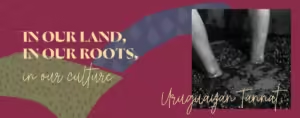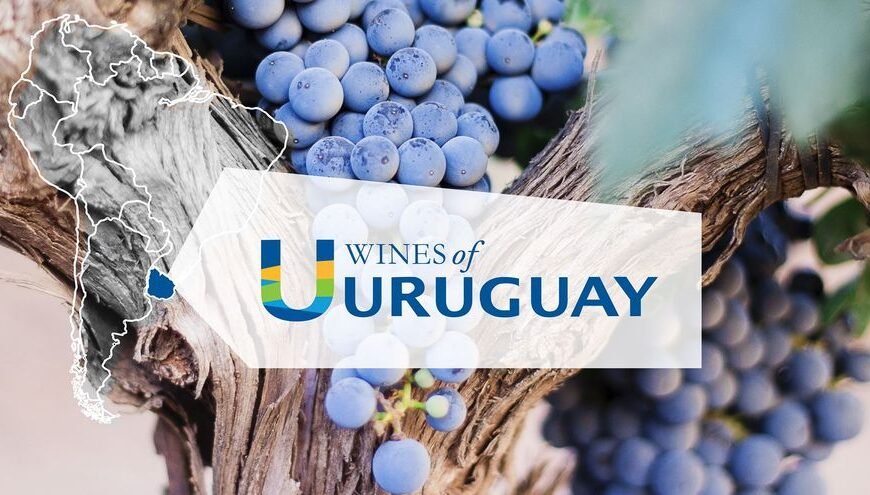You’ve probably heard the expression “good things come in small packages.” Such is the wine story of Uruguay, a country that’s tiny by size and output, but increasingly, a source for opulent as well as elegant wines. Uruguay is the second smallest country in South America, is fairly flat, and while the coastal areas are very humid with rolling green hills and limestone and clay soils, up north the humidity drops considerably and the soils become rocky. So even being small, you get a big variety of styles and grapes. Wine making has been going on in Uruguay for well over 250 years, but it was the French-Basque immigrant, Don Pascual Harriague who brought Tannat vines to Uruguay in the late 1800’s from France. Tannat proved to be a perfect match for the primarily clay-loam soils and temperate maritime climate of Uruguay, and has been Uruguay’s signature wine ever since. Uruguayan wines are closer in structure, style, and taste to Old World wines, as Uruguay’s climate is the closest in South America to Bordeaux; it’s humid, at sea level, seasonal and it has limestone soils rich in calcium.

All the wineries are small and still family-owned and run. The wines are virtually all hand-made every step of the way, and infused with the passion and enthusiasm of these families, resulting in unique wines with characteristics that reflect both the terroir of the vineyard and the personality of the individual winemaker.These are wines with soul that connect you with the people and the place behind each one of them.Uruguayan wines offer excellent value for money; they can blow Chile or Argentina out of the water in the price-quality boat. There’s no question that Uruguayan wines, particularly Tannats, are worth seeking out. You’ll find that the virtues of Uruguayan wines go beyond being a good match with beef. They are versatile, complex, and worthy.

The last 20 years have introduced major changes to the country’s wines. Consistent export channels and an international reputation for quality are now priorities, and Uruguayan wineries have made the necessary strides to compete with more established and much larger wine-producing countries. This has been fueled in part by input from global wine consultants and the overhaul of over productive vineyards. New growing regions like Garzón and the emerging Altos de José Ignacio subzone, both in Maldonado where the Atlantic Ocean shows its strongest influence, have also propelled Uruguay forward.
Canelones, located in the Southern zone is one of the largest Uruguayan wine regions. The region boasts spectacular landscapes of rolling hills, beaches, and farmlands. Canelones is located north of Montevideo, where a warm climate and clay-rich calcareous soils favor the production of wines with well-balanced alcohol and acidity level.The fourth-largest wine region of Uruguay wine country, San José, is also located in the Southern Zone of the country. Climate conditions and the soils are pretty much similar to the Canelones wine region. Winemakers from San José produce white wines from international grape varieties such as Pinot Blanc, Sauvignon Blanc, and Chardonnay. Tannat, solely or in blend with Tempranillo, Cabernet Franc, Syrah, and Merlot, is also well-spread in San José.
Durazno is of the famous Uruguayan wine regions located in Central Zone. This zone is characterized by a warmer climate. Thus, in Duranzo they normally harvest two weeks before then in Canelones. Durango is famous for the production of well-matured Cabernet Sauvignon and Cabernet Franc wines. Mandolado wine region represents the Eastern Zone of the country, which is characterized by interesting soils of crystalline rocks and quartz inlays. Particular soils of the region give specific minerality to the wines produced here. Mandolado is the home to one of the most popular coastal resorts of Uruguay, which puts this region on the hotspot of international travelers. The latest investments and improvements in winemaking bring promises that Mandolado is becoming a new center of Uruguyan winemaking after Canelones.
Tannat was originally known for its harsh tannins, high acidity and dark fruit that was nearly undrinkable upon release, but in Uruguay, vintners have found methods to soften the tannins and create powerful wines that taste of plums and blackberries. In addition to these fruit flavors, Tannat, when blended with other varieties, or produced in capable winemaking hands, tends to show off more complex notes of herbs, chocolate, leather, earth and minerals.With more of this grape grown in Uruguay than anywhere else in the world, Tannat is the country’s champion variety, representing over a quarter of its production. Because it’s one of the most tannic varieties in the world, you might ask why it became Uruguay’s champion. Because of its coastal position, Uruguay has significant vintage variation, and the thick skins of Tannat are capable of withstanding wetter, drier, hotter, or cooler vintages and yielding dependable results. Moreover, Uruguay now has more than 100 years of experience with the variety, and this expertise is driving producers to experiment with a range of styles, from unoaked Tannat to sparkling (red) Tannat. While originally from the Basque region of France, Tannat was brought to Uruguay in the 1870s. It is now considered Uruguay’s national red wine. Tannat is often blended with Pinot Noir, Merlot or other Bordeaux varieties, and sometimes with Syrah and Viognier. Albariño is currently a rising star in Uruguay. Considering the country’s maritime climate, which is similar to that of Galicia and northern Portugal, it’s no surprise that it thrives here. The wine was a runaway success, and the family soon planted more Albariño, this time farther along the coast, in Pan de Azucar; other coastal producers followed suit, making Albariño one of the fastest-growing varieties in Uruguay at the moment.In France, it’s primarily been a blending grape. In Uruguay, where it’s bottled as a single varietal, Tannat was traditionally brooding and heavily oaked. In recent decades, producers have eased up on maceration and barrel aging to achieve approachable, food-friendly wines. Beneath a pergola beside her winery restaurant, Bracco’s single-parcel OmbúTannat has the leathery elegance to handle a lunch of grilled mackerel with leek sauce.
Pale lemon color with honeysuckle, jasmine grapefruit zest, Key lime, ripe peach and apricot aromas. On the palate, it’s between light and medium-bodied with vibrant acidity and ripe peach, Key lime, apricot, honey flavors complicated with an appealing hint of spice. Tannat based Rosé Vermouth with 27 botanicals including 4 flowers(including roses, hops, elderflower and chamomile) The base wine is made at Marichal winery. Uruguay, Canelones Medium ruby color with black currant, plum, red licorice, violet, bramble, tobacco box and oak aromas. On the palate, it’s medium-bodied with lively acidity and firm tannins with black currant, black cherry, plum, vanilla and bittersweet chocolate flavors with a graphite minerality, and very satisfying finish.

